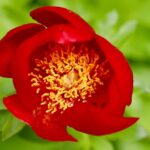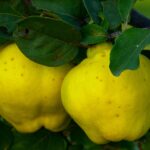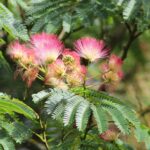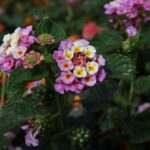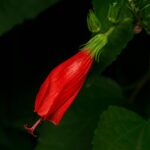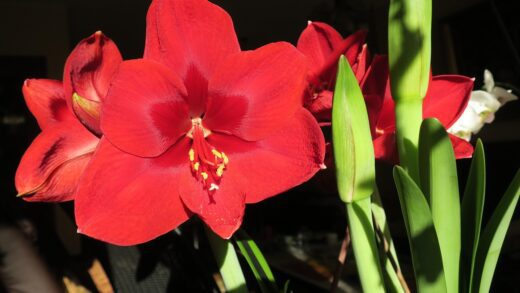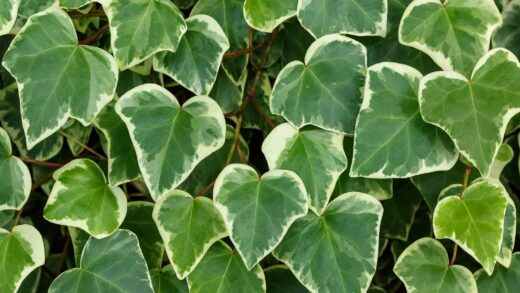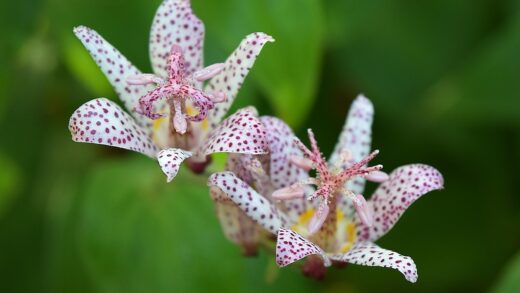Understanding the fundamental requirements for the successful cultivation of the Balkan bellflower is paramount for any dedicated gardener. This resilient and charming perennial, known for its sprawling habit and star-shaped, lavender-blue flowers, is a relatively low-maintenance plant, yet it thrives best under specific conditions that mimic its native Balkan mountain habitat. Providing the right balance of light, water, and soil is the cornerstone of its care, ensuring vigorous growth and a profusion of blooms throughout its long flowering season. Attention to these details from the outset will prevent many common issues and result in a healthy, spreading carpet of foliage and flowers that can grace rock gardens, borders, and containers for years to come. Proper care not only enhances the plant’s aesthetic appeal but also bolsters its natural defenses against pests and diseases, making it a truly rewarding addition to the garden.
Cultivating this plant begins with a proper understanding of its basic needs, which are surprisingly straightforward for a plant of its beauty. It is a hardy perennial that adapts well to a variety of garden settings, making it a versatile choice for both novice and experienced horticulturists. The key to its heart lies in well-drained soil, as it despises waterlogged conditions which can quickly lead to root rot and the plant’s demise. Therefore, amending heavy clay soils with organic matter or grit is a crucial first step in preparing a suitable home for it. This initial soil preparation is an investment that pays dividends in the form of a healthy, robust plant that will require less intervention later on.
The ongoing maintenance throughout the growing season is minimal but significant. Regular deadheading, the practice of removing spent flowers, is highly recommended to encourage a continuous display of blooms. This simple act redirects the plant’s energy from seed production to creating more flowers, often resulting in a second, albeit sometimes less spectacular, flush of flowering later in the season. Beyond aesthetics, this practice also helps maintain the plant’s tidy appearance and prevents unwanted self-seeding in areas where its spread needs to be controlled. This is a simple task that can be done with a pair of shears or even by hand during a routine garden walk.
Monitoring the plant’s overall health is an integral part of its care regimen. This involves periodically inspecting the foliage for any signs of stress, such as yellowing leaves or the presence of pests. While generally a resilient species, it is not entirely immune to common garden ailments, and early detection is key to effective management. A healthy Balkan bellflower will exhibit vibrant green leaves and a dense, mounding growth habit. Any deviation from this could signal an underlying issue with its growing conditions, such as improper watering, nutrient deficiencies, or pest infestations that need to be addressed promptly.
Ideal soil conditions
The foundation of a thriving Balkan bellflower is undeniably the soil in which it is planted. This species has a strong preference for well-drained soil, a characteristic that traces back to its origins on the rocky slopes of the Balkan Peninsula. It cannot tolerate ‘wet feet’, meaning its roots should never be left sitting in stagnant water. For this reason, heavy clay soils, which are notorious for poor drainage and compaction, present a significant challenge. To cultivate this plant successfully in such conditions, substantial soil amendment is not just beneficial, but absolutely essential for its long-term survival and health.
More articles on this topic
To create the perfect growing medium, one must focus on improving the soil’s structure and drainage capabilities. Incorporating generous amounts of organic matter, such as compost, leaf mold, or well-rotted manure, is an excellent strategy. This not only lightens the soil’s texture but also enhances its fertility, providing a slow-release source of essential nutrients. Additionally, adding inorganic materials like coarse sand, perlite, or fine gravel can dramatically improve drainage, creating the airy, porous environment that the root system requires to flourish and expand without the risk of suffocation or rot.
The ideal soil pH for the Balkan bellflower ranges from neutral to slightly alkaline. It is generally adaptable and can tolerate slightly acidic conditions, but it performs best when the pH is between 6.0 and 8.0. Conducting a simple soil test before planting can provide valuable insights and allow for any necessary adjustments. If the soil is too acidic, amending it with garden lime or wood ash can help raise the pH to a more suitable level. This attention to soil chemistry ensures that nutrients are readily available for the plant to absorb, which directly impacts its growth rate and flowering potential.
Furthermore, the physical location of the planting site plays a role in maintaining soil health. Planting on a gentle slope or in a raised bed can naturally enhance drainage, providing an extra layer of protection against waterlogging, especially in regions with heavy rainfall. This strategic placement works in tandem with soil amendments to create the optimal root environment. Ultimately, by replicating the free-draining, moderately fertile conditions of its native habitat, you provide the Balkan bellflower with the perfect foundation for a long and floriferous life in your garden, rewarding your efforts with a cascading display of vibrant blooms.
Sunlight and placement
Selecting the optimal location for your Balkan bellflower is a critical decision that will profoundly influence its growth and flowering performance. This plant exhibits a considerable degree of adaptability when it comes to light exposure, but its ideal preference is for a position that receives full sun to partial shade. In cooler climates, a spot that basks in at least six hours of direct sunlight per day will promote the most compact growth and the most prolific blooming. The abundant light encourages the development of a dense mat of foliage and a profusion of its characteristic star-shaped flowers, creating a truly spectacular display.
More articles on this topic
In regions with hot, intense summer sun, a location offering partial shade, particularly during the scorching afternoon hours, is more beneficial. The morning sun provides sufficient light for robust growth and flowering, while protection from the harsh afternoon rays helps prevent the foliage from scorching and the plant from becoming stressed. This consideration is especially important for maintaining the plant’s vibrant green leaf color and overall vigor throughout the summer months. An ideal spot might be on the east-facing side of a building or under the dappled light of a high-canopy tree, where the plant is shielded during the hottest part of the day.
The versatility of the Balkan bellflower’s growth habit makes it suitable for a wide array of garden applications, which should be considered when choosing its placement. Its trailing nature makes it an excellent choice for cascading over rock walls, spilling out of containers, or softening the edges of pathways and borders. When used as a ground cover, its spreading tendency allows it to fill in gaps between taller plants, creating a living mulch that helps suppress weeds. Understanding how you want the plant to function in your landscape design is key to selecting a location where its natural form can be showcased to its best advantage.
When considering placement, it is also important to think about its future growth and spread. While not aggressively invasive, the Balkan bellflower does spread via rhizomes to form a dense mat over time. Therefore, it is wise to give it adequate space to expand without encroaching on more delicate, less vigorous neighboring plants. Proper spacing ensures good air circulation around the plant, which is crucial for preventing fungal diseases like powdery mildew, particularly in humid conditions. Strategic placement, therefore, involves a balance between providing ideal light conditions and accommodating the plant’s natural growth habit for a harmonious and healthy garden composition.
Pruning and maintenance
Routine pruning and maintenance are key practices for keeping the Balkan bellflower looking its best and encouraging a healthy, vigorous plant. The primary maintenance task is deadheading, which involves the removal of faded or spent flowers. This simple procedure is highly beneficial as it prevents the plant from diverting its energy into seed production. By regularly snipping off the old blooms, you signal the plant to produce more flowers, which can significantly extend the blooming period from late spring well into the summer, and sometimes even result in a secondary flush in the autumn. This ensures a continuous and more impressive floral display.
A more substantial pruning or shearing may be beneficial after the initial main flush of flowers has finished, typically in mid-summer. Using a pair of garden shears, you can cut the entire plant back by about one-third to one-half of its height. This “haircut” might seem drastic, but it serves multiple purposes. It tidies up the plant’s appearance, removing any leggy stems and tired-looking foliage that can develop during the peak flowering season. More importantly, this rejuvenation pruning stimulates a fresh flush of dense, compact new growth, often leading to a second round of flowering as the weather cools in late summer or early autumn.
Beyond promoting new flowers and foliage, this mid-season shearing also plays a role in disease prevention. By thinning out the dense mat of growth, you improve air circulation through the plant’s center. This is particularly important in damp or humid climates where stagnant air can create a breeding ground for fungal diseases such as powdery mildew or botrytis. A well-aerated plant is a healthier plant, better equipped to resist such pathogens. This preventative approach to pruning is a cornerstone of integrated pest and disease management in the garden.
Finally, a late autumn or early spring cleanup is the last piece of the maintenance puzzle. After the first hard frost, you can choose to trim back any dead or damaged foliage to tidy the plant for winter, though leaving the foliage can provide some insulation for the crown. Alternatively, you can wait until early spring, just as new growth begins to emerge, to cut back the old, winter-damaged stems. This removes any dead material and makes way for the vigorous new shoots, ensuring the plant starts the new growing season with a clean slate and a strong foundation for the year’s performance.
Pest and disease management
While the Balkan bellflower is renowned for its hardiness and general resistance to problems, it is not entirely immune to pests and diseases. Proactive management and regular monitoring are essential to keep these issues at bay and ensure the plant remains healthy. The most common pests attracted to this plant are slugs and snails, which can be particularly troublesome in damp, shady conditions. These mollusks are fond of the tender foliage and can create unsightly holes in the leaves, and in severe infestations, they can cause significant damage to young plants. Implementing control measures such as beer traps, diatomaceous earth, or iron phosphate-based slug baits can be highly effective.
Aphids are another potential pest that may occasionally colonize the new, succulent growth of the Balkan bellflower. These small, sap-sucking insects can cause leaves to curl and distort, and they excrete a sticky substance called honeydew, which can lead to the growth of sooty mold. In most cases, a strong jet of water from a hose is sufficient to dislodge small aphid populations. For more persistent infestations, insecticidal soap or neem oil can be applied, ensuring thorough coverage of the undersides of the leaves where aphids tend to congregate. Encouraging natural predators like ladybugs and lacewings into the garden can also provide excellent long-term biological control.
On the disease front, the most prevalent issue affecting the Balkan bellflower is powdery mildew. This fungal disease appears as a white, dusty coating on the leaves and stems, and it is most common in conditions of high humidity and poor air circulation. While it rarely kills the plant, it is unsightly and can weaken it over time. The best defense is prevention: ensure proper spacing between plants to promote good airflow, water at the base of the plant to keep foliage dry, and avoid overhead irrigation, especially in the evening. If powdery mildew does appear, applying a fungicide containing sulfur or potassium bicarbonate can help manage its spread.
Root rot is a more serious, though less common, disease that can be fatal to the plant. This issue is almost always a direct result of poor drainage and waterlogged soil conditions. The symptoms include yellowing leaves, wilting, and a general lack of vigor, as the roots are unable to function properly and begin to decay. Prevention is the only effective cure for root rot. This underscores the critical importance of planting the Balkan bellflower in well-draining soil from the outset. Once root rot has set in, it is very difficult to reverse, and the affected plant often needs to be removed and discarded to prevent the spread of pathogenic fungi in the soil.
Watering practices
Proper watering is a cornerstone of successful Balkan bellflower cultivation, directly influencing the plant’s health, vigor, and flowering capacity. While it is known for a degree of drought tolerance once established, it performs best with consistent and adequate moisture, especially during its active growing and blooming periods in spring and summer. The primary goal is to maintain a consistently moist soil environment without ever allowing it to become waterlogged or soggy. This balance is crucial, as both under-watering and over-watering can lead to stress and potential health problems for the plant. Finding this equilibrium is key to unlocking its full potential in the garden.
The frequency of watering will depend heavily on several factors, including climate, soil type, and the plant’s specific location in the garden. In sandy, fast-draining soils and during hot, dry weather, more frequent watering will be necessary to prevent the soil from drying out completely. Conversely, in heavier, clay-based soils that retain moisture for longer, the intervals between watering should be extended to avoid creating the anaerobic conditions that can lead to root rot. A reliable method to determine when to water is to check the top inch or two of soil; if it feels dry to the touch, it is a good indication that the plant is ready for a drink.
When it is time to water, a deep and thorough soaking is far more beneficial than frequent, shallow applications. Deep watering encourages the plant to develop a strong, extensive root system that can search for moisture deeper in the soil profile. This, in turn, makes the plant more resilient and better able to withstand periods of drought. Watering deeply ensures that the entire root zone is hydrated, rather than just the surface. Aim to apply water directly to the base of the plant, using a soaker hose or a gentle stream from a watering can, which minimizes water loss through evaporation and helps keep the foliage dry, reducing the risk of fungal diseases like powdery mildew.
Newly planted Balkan bellflowers will require more regular and attentive watering as they work to establish their root systems. For the first few weeks after planting, it is crucial to keep the soil consistently moist to help the plant settle into its new environment and reduce transplant shock. Once the plant is well-established, which is typically indicated by the appearance of new growth, you can gradually reduce the frequency of watering. An established Balkan bellflower will have a more robust root system and will demonstrate increased drought tolerance, although it will still appreciate a good soaking during prolonged dry spells to maintain its lush appearance and continuous blooming.








